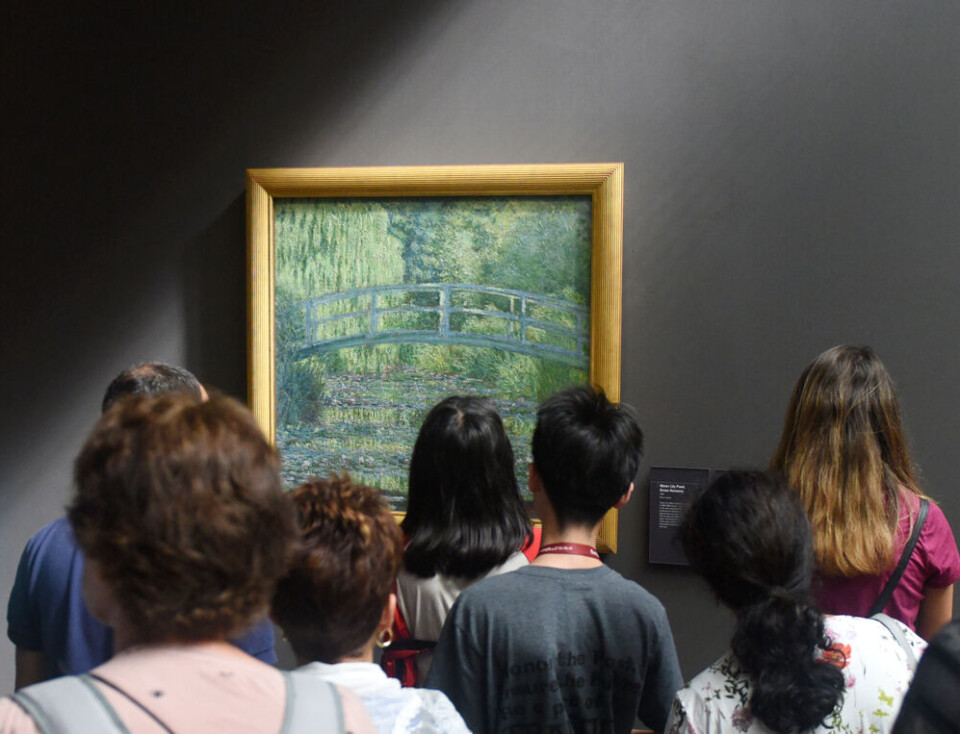-
David Hockney among France’s New Year honours list
Former Normandy resident awarded second grade of honour
-
Stendhal syndrome: has art ever driven you to distraction?
Discover the condition where art induces intense emotions and even physical reactions
-
Paris metro station Villejuif-Gustave Roussy named world’s most beautiful
International architecture award supported by Unesco given to stop on metro line 14
France and the US to host major impressionist art tour
Paintings to mark the 150th anniversary of the movement will be loaned to 34 sites in France and an exhibition is also heading to Washington

The world's leading museum of impressionist art is sharing an unprecedented number of its masterpieces with galleries across the country, as well as the United States, to mark the movement's 150th anniversary.
The first exhibition of impressionist works took place in Paris on April 15, 1874. Today, the Musée d'Orsay in the capital, which houses the world's largest collection of such works, is preparing to hold a major exhibition in celebration.
It is also lending 178 of its key works to 34 galleries across France to support their own, separate exhibitions as part of what has been billed a ‘Tour de France’.
“As soon as I became head of the Musée d'Orsay, I wanted this anniversary of impressionism to be celebrated far beyond its Parisian walls,” Christophe Leribault, President of the Musée d'Orsay, said in a statement.
“For the occasion, some of the movement's greatest masterpieces will leave the platforms of the former Gare d'Orsay for the six corners of France.”
Artworks are to be sent to locations such as Yvetot, Saint-Lô, Ajaccio and Douai, as well as Besançon and Saint-Denis on the island of Reunion.
“150 years on, it was fitting that the echo of this inaugural event resonated throughout the country so that the celebration would be commensurate with this aspect of French genius,” he added.
The museum's own exhibition is called 'Paris 1874: Inventing impressionism' and will run from March 26 to July 14. It will then travel to the National Gallery of Art in Washington from September 8 2024 to January 20, 2025.
Celebrating the style
When it comes to the ‘Tour de France’, the paintings being lent to different locations vary in style.
“Loans will include strictly impressionist works, as well as pre-, para- and post- impressionist works, so that they reflect all the richness of the movement, from its beginnings in Daubigny or Manet to the expansions of Van Gogh or Bonnard,” explained Mr Leribault.
“It is a true national celebration that is being prepared to mark a century and a half of the triumph of impressionism.”
Read also: Paris Orsay museum opens new impressionist wing
The Musée d’Orsay's exhibition, meanwhile, will reunite many of the works from the revolutionary first impressionist art show in 1874.
These will be displayed alongside examples of pieces which at that time were favoured by the Salon – the official art exhibition of the prestigious Royal Academy of Painting and Sculpture in Paris – to highlight the contrast between the two styles.
Among the impressionist works being exhibited will be Monet's ‘Impression, Soleil Levant’ (Impression, Rising Sun) from 1872. It was an art critic's sarcastic response to the painting - a negative review titled ‘The Exhibition of the Impressionists’ - that gave the movement its name.
An immersive experience
As is increasingly common at major exhibitions, Orsay will also offer an immersive experience putting visitors at the heart of a recreation of the first exhibition on 15 April 1874.
The recreation, called ‘An Evening with the Impressionists’, equips you with a virtual reality headset to immerse visitors in this historic overview of the leading figures of Impressionism.
Read more: How virtual reality is creating new opportunities for French tourism
The one-hour experience will allow guests to feel like they are attending that first ground-breaking exhibition, in the Paris of that era.
Between sarcastic comments from visitors and the first attempts of young prodigies, your eyes and ears will take you back to the nineteenth century, to the beginnings of one of the greatest artistic movements born in France.
The history of impressionism
Impressionism was born in April 1874 when a group of painters including Claude Monet, Auguste Renoir and Paul Cezanne, tired of being rejected by the government-backed Paris Salon, held their own independent show.
The group rebelled against classical subject matter and embraced modernity, choosing to create works that reflected the world in which they lived.
The young artists decided to paint simply what they saw, thought and felt – they tried to capture on canvas an ‘impression’ of how a landscape, thing, or person appeared to them at a certain moment in time.
This led to them also favouring plein air painting (painting outside), a practice which had grown in popularity due to the invention of portable, pre-mixed paint in a tube.
By the mid-1880s the impressionist group had begun to break up as each painter increasingly pursued his own aesthetic and principles. However, in its short existence, the movement had created a revolution in the history of art, providing a new approach to subject matter.
Initially derided by critics, impressionism has since been embraced as one of the most popular and influential styles in Western art history.
Read also
Painting destined for the bin ends up at Louvre and valued at €24m
Exhibition showcasing Van Gogh’s last works opens in Paris
France ordered to return ‘lost’ Renoir, Gauguin and Cézanne artworks
























